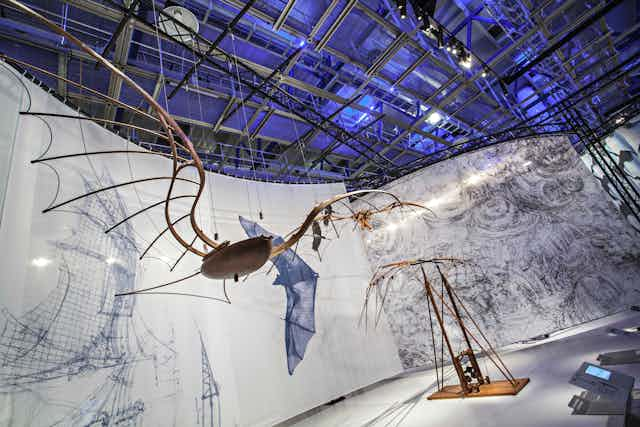Leonardo da Vinci, as we know, was the epitome of the Renaissance man. We know that he was a genius, a polymath, a pioneer in fields as diverse as anatomy and hydrodynamics. We know that Leonardo invented the tank, the helicopter, the flying machine, the parachute, and the self-powered vehicle. We know that he was a “man ahead of his time” and that his visionary inventions weren’t to be realised for centuries.
Well, not exactly. Leonardo the inventor is subject to legends in much the same way as the Mona Lisa. But the reality beneath the stories is no less exciting, as the Science Museum’s new exhibition Leonardo da Vinci: The Mechanics of Genius makes abundantly clear.
He was trained in Florence in the 1470s, when the workshops of some major artists not only took on art in every kind of medium but also tasks that we would now classify as engineering – both civil and military. His master, Andrea del Verrocchio, was famed chiefly as a sculptor, but was also responsible for the soldering and erection of the great copper ball on top of the dome of Florence’s cathedral. This brought the young engineer into direct contact with the lifting and construction devices of the great Filippo Brunelleschi, architect of the dome.
These artist-engineers were employed to produce a wide range of practical machines of the kind that rarely leave their mark in written and drawn records. Leonardo, for instance, produced ingenious designs for the sluices of lock gates. We know about this because of a memorandum in which he speaks of sluices for rivers that he arranged for the Venetians in 1500, when he was visiting the maritime republic.
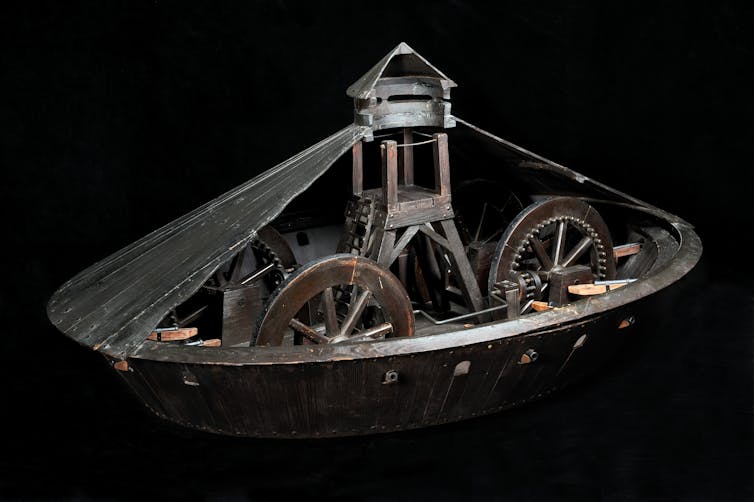
Leading engineers also indulged in more visionary designs in their treatises. These involved a lot of “visual boasting” aimed at prospective or actual employers. Like all prospectuses, the treatises were designed to make an impression. Many of Leonardo’s most famous designs fall into this category. An example is the so-called “tank”, a kind of wood-and-steel woodlouse fringed by cacophonous arrays of guns, which was designed to scoot across the dusty battlefield. It is high on shock and awe and low on practicality – as the designer and his patron would have realised.
Other famous designs have been misread. The “helicopter” or airscrew, known only in a single thumbnail sketch, cannot have been for manned flight, since the whole machine would have revolved frantically. Rather, it is a device of technological entertainment. The same applies to the spring-driven “car”, which would have scuttled across a town square during a festival carrying a costumed figure, such as an angel. Its distance of travel would have been finite.
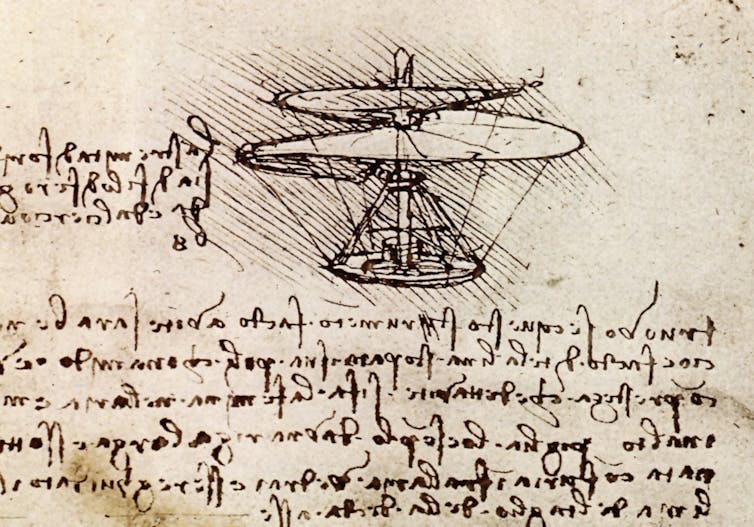
Taking such designs down a peg – from helicopter to entertainment – does nothing to diminish Leonardo’s extraordinary inventiveness. Nobody was ever more adept in envisaging how to solve technical problems, often by transmitting motion in one plane into another using intricate arrays of gears, cams, axles and levers.
Locating genius
If we step back from the individual inventions, we can see that his genius an engineer rests on three foundations.
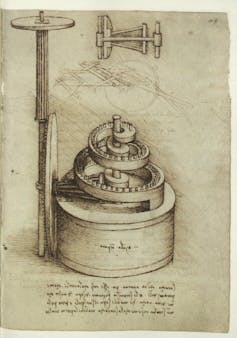
The first is that he saw clearly how the design of machines must be informed by the mathematical laws of physics rather than just relying upon practice. For instance, he realised that if the power of an unwinding spring diminished according to a mathematical ratio, any device to compensate for this must be designed in accordance with the mathematics. As such, he invented a series of conical and spiral gears that could be mounted on the axle of a barrel-spring to counteract the unwinding.
He was also the first to design separate components that could be deployed in a variety of devices. His “elements of machines” ranged from complex units such as the gears for barrel springs and ring bearings for axles to relatively simple hinges.
And no-one ever drew machines with more attention to reality. The mental “sculpture” that he conducted in his mind was transmitted on to the paper with total conviction. He knew that such “portraits” of devices did not necessarily clarify all the details of construction, and needed to be amplified with drawings of the individual parts. The solid section above the barrel spring brilliantly shows how two cylindrical sleeves at either end of the axle of the conical lantern gear slide on the vertical shaft to accommodate its climb up the helter-skelter ramp.
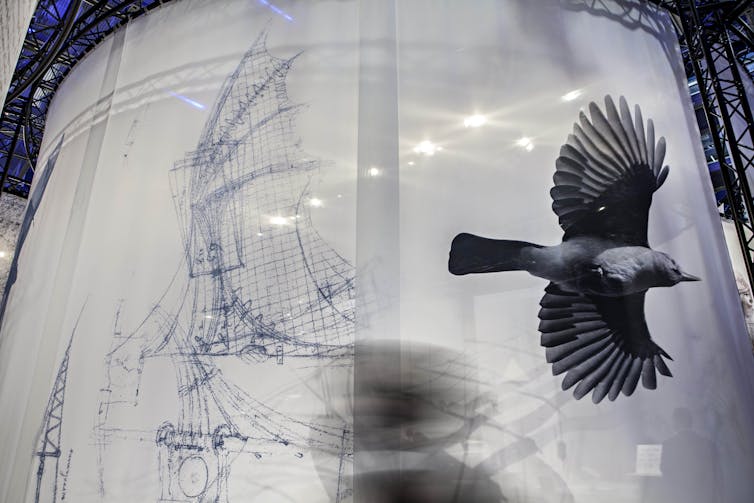
Leonardo’s famous efforts to devise various kinds of flying machines were directed by the emulation of nature – not literally to imitate a bird, but to apply the principles of bird flight to endow man with the capacity to fly in his own way. His genius lay in his aspiration to create “a second nature in the world”: his dual mastery of engineering design and natural law.

